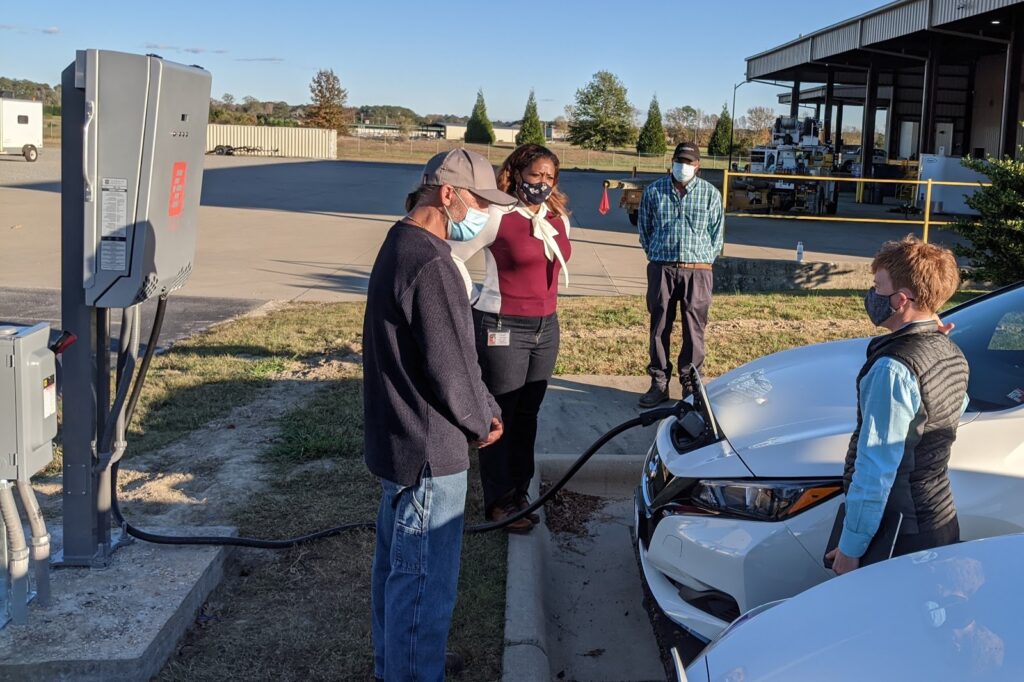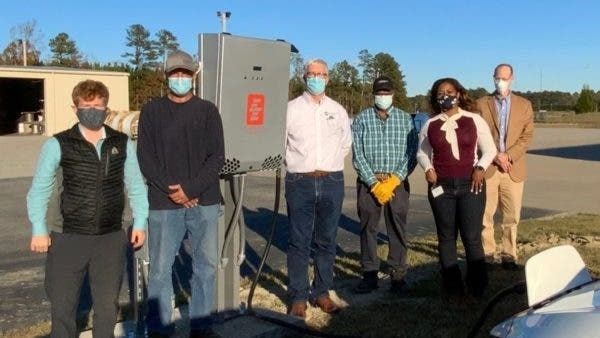This article is based on reporting from the National Rural Electric Cooperative Association, by Cathy Cash.
Early results from the first electric cooperative demonstration of a new electric-vehicle-to-grid charger show promise that such systems can help reduce peak demand and save members money.
Roanoke Electric Cooperative in Ahoskie, North Carolina, is demonstrating a special electric vehicle (EV) charger that can do double duty: It can both energize an EV and use the car’s batteries to feed power back to the electric grid. This bidirectional, or V2G, capability could help utilities avoid peak power costs by tapping into the lower-priced energy stored by an EV during nighttime or off-peak hours. “The overall goal is to stabilize our rates, become more efficient as a utility and prove new ways to save our members money,” said Curtis Wynn, president and CEO of Roanoke Electric, which serves about 14,000 members.

“The overall goal is to stabilize our rates, become more efficient as a utility and prove new ways to save our members money,” said Curtis Wynn, president and CEO of Roanoke Electric, which serves about 14,000 members.
This new charger is the first of its kind in the US to receive the certification of UL (formerly Underwriters Laboratories), which reassures end users that the device has undergone rigorous safety testing and engineering. The maker of the new charger, Fermata Energy, asked Roanoke Electric last year to help test its FE-15 charger using the co-op’s two leased Nissan LEAF EVs. The device can draw up to 111.6 kilowatt-hours in V2G capacity from the vehicles’ 62-kWh lithium ion batteries.
Already, the system shaved 11 kW off its January peak, saving $105, said Anita Knight, Roanoke Electric’s manager of engineering.
“It’s a very small percentage based on average demand on a monthly basis, but it is proving the concept,” Knight said.
Wynn said the co-op will use the test results to inform an upcoming commercial EV rate design study that will enhance its current pilot residential EV rate. The ultimate goal is to determine how to pass on savings and create EV incentives for members.

NCCETC is supporting this demonstration with analysis, technical assistance, and facilitation. Richard Sapienza, Director of NCCETC’s Clean Transportation Program, said, “This V2G demonstration project is helping prove the benefits and economics of the technology, which is an important component of technology application and commercialization. There have been many cool and interesting technologies that did not achieve commercial success because they did not solve a problem, meet a need and/or make economic sense. We have a technology that works. This project is identifying the use cases where it can be applied in a beneficial manner.”
NCCETC clean transportation specialist John Bonitz added, “the really exciting thing about Roanoke Electric’s leadership is seeing their confidence in a future where electric school buses and cars will help support the grid and shave peaks, etc., all of it helping the whole cooperative save money.”
Watch this blog for further updates as this demonstration progresses and accumulates more data on V2G value streams.
